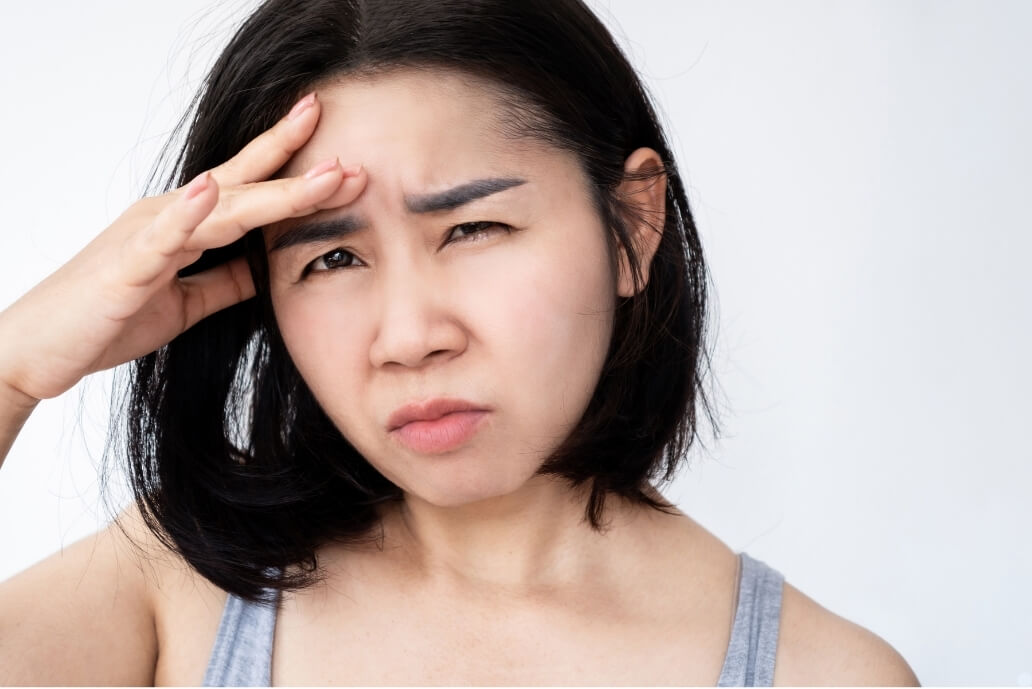
If you’ve ever experienced the sudden onset of a headache or migraine after being exposed to bright lights, you’re not alone.
This phenomenon, known as photosensitivity, affects many people and can be quite disruptive. Let’s explore what photosensitivity is, how it relates to migraines, and some simple steps you can take to manage it.
What is Photosensitivity?
Photosensitivity, also known as light sensitivity, is a condition where the eyes are extremely sensitive to light. This sensitivity can trigger discomfort, pain, and even migraines. Various factors can contribute to photosensitivity, including certain medications, medical conditions, or just a natural predisposition (Digre, and Brennan, 2012).
The Connection Between Photosensitivity and Migraines
Migraines are more than just severe headaches. They can be accompanied by nausea, vomiting, and sensitivity to light and sound. For many migraine sufferers, light is a significant trigger. Bright lights, flickering screens, and even certain colours can set off a migraine or make an existing one worse.
The exact reason why light can trigger migraines isn’t fully understood, but it’s believed that in people with migraines, the brain is more sensitive to sensory input. When exposed to bright or flickering light, the brain’s response can be to set off a cascade of neurological events that lead to a migraine (Digre, and Brennan, 2012).
Managing Photosensitivity and Migraines
Living with photosensitivity and migraines can be challenging, but there are ways to manage the symptoms and reduce the frequency of episodes.
Here are some gentle and practical tips:
- Create a Comfortable Environment: At home or work, ensure your lighting is soft and adjustable. Use lamps with warm, gentle bulbs instead of harsh overhead lights. Consider blackout curtains to control natural light.
- Use Protective Eyewear: When stepping outside, wear sunglasses that offer UV protection. There are also specialized glasses designed for migraine sufferers that can filter out certain wavelengths of light.
- Screen Management: For those who spend a lot of time in front of screens, use blue light filters and take regular breaks to rest your eyes. Adjust the brightness and contrast settings to a comfortable level.
- Stay Hydrated: Dehydration can trigger migraines, so make sure to drink plenty of water throughout the day. A hydrated body can better cope with stress and sensory triggers.
- Mindful Relaxation: Stress is a common migraine trigger. Incorporate relaxation techniques such as deep breathing, meditation, or gentle yoga into your daily routine. These practices can help calm your nervous system and reduce the likelihood of a migraine.
- Monitor Triggers: Keep a migraine diary to identify and track your triggers. Noting down what you were doing, eating, or feeling before a migraine can help you pinpoint patterns and avoid specific triggers in the future.
- Consult our Physiotherapists with migraine training: If you frequently suffer from migraines, consider seeing a physiotherapist with specialised migraine training from one of our clinics. They can offer personalised advice and treatment options, helping you to decrease your photosensitivity. Give us a call on 1800 43 23 22 or book online with one of our expert headache clinicians today.
A Gentle Reminder
Living with photosensitivity and migraines requires a balance of awareness and proactive management. It’s important to be kind to yourself and understand that it’s okay to take steps to create a more comfortable environment. By making small adjustments and being mindful of your triggers, you can significantly improve your quality of life.
References
Digre, K., & Brennan, K. (2012). Shedding light on photophobia. Journal of Neuroophthalmology, 32(1), 68-81.
Written by:






